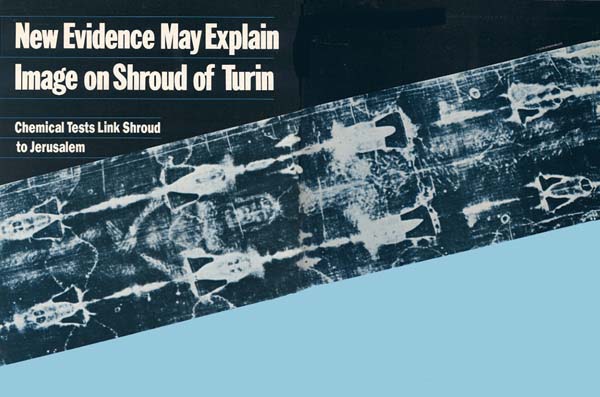Image Details

© 1978 Vernon Miller
Front and back of the man of the shroud appear as positive images in a 1978 photographic negative taken with high-contrast film under blue light. As the first photos of the shroud in 1898 revealed, the image on the cloth is, surprisingly, a negative. Authors Kohlbeck and Nitowski contend that the image may be explained by a chemical process called mercerization: the damp alkaline limestone of a first-century Jerusalem cave tomb rubbing onto the linen could have produced the yellowish images. Because the process is accelerated by heat, the man’s back, lying on the stone, cooled more quickly than the front of his body and thus produced a fainter image.
